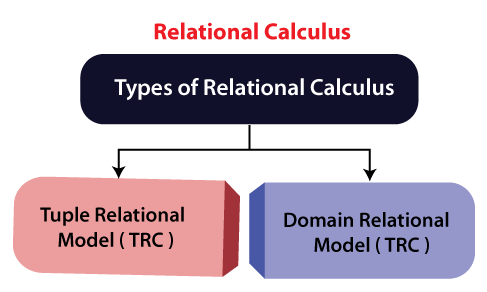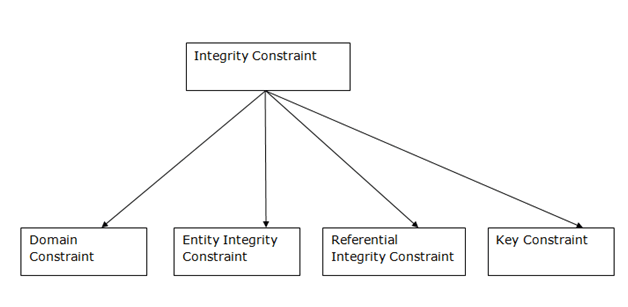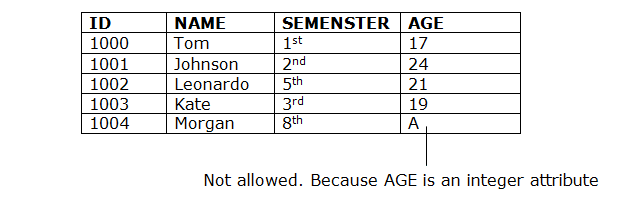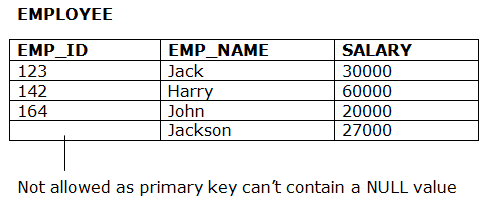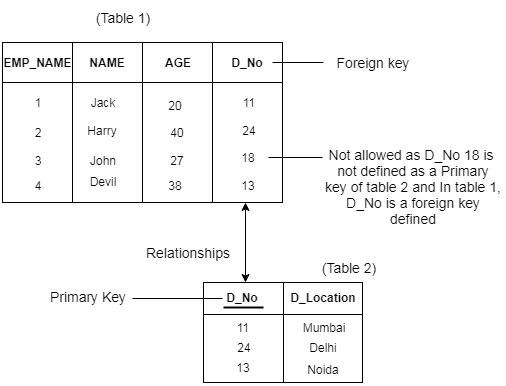Functional Dependency
Functional dependency is a relationship that exists between two attributes. It typically exists between the primary key and non-key attribute within a table.
The left side of FD is known as a determinant, and the right side of the production is known as a dependent.
For example:
Assume we have an employee table with Emp_Id, Emp_Name, Emp_Addressand attributes.
Here Emp_Id attribute can uniquely identify the Emp_Name attribute of the employee table because if we know the Emp_Id, we can tell that the employee name is associated with it.
Functional dependency can be written as:
We can say that Emp_Name is functionally dependent on Emp_Id.
Types of Functional dependency

1. Trivial functional dependency
- A → B has trivial functional dependency if B is a subset of A.
- The following dependencies are also trivial: A → A, B → B
Example:
2. Non-trivial functional dependency
- A → B has a non-trivial functional dependency if B is not a subset of A.
- When A intersection B is NULL, then A → B is called a complete non-trivial.
Example:

